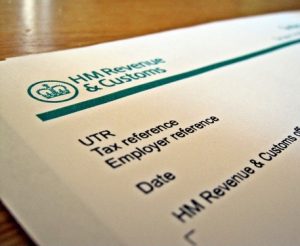What exactly do all the numbers and letters in my tax code mean? And what do I do if I think it’s wrong?
HMRC generate your tax code based on the information that they hold about you and your income, and then send this to your employer so that they can deduct the correct amount of tax from you on behalf of HMRC. Your tax code will depend on your individual situation, but will normally start with a number and end with a letter.
For the 22/23 tax year the standard tax code for people with only one employment or pension income is 1257L. This is because most people have a tax free personal allowance of £12,570 for the year (the last ‘0’ is always dropped), which is the amount you can earn before having to pay income tax.
What does my tax code mean?
Any income that you haven’t paid tax on (such as untaxed interest or part-time earnings) and the value of any benefits from your job (such as a company car or health insurance) are added up, and then deducted from your personal allowance. What’s left is the tax-free income you’re allowed in a tax year.
Alternatively, you may have things that are vital to perform your job (association fees, accreditations, etc) and these are allowable expenses that will increase your personal allowance meaning you can earn more before you start paying income tax.
What the letter means
Letters in your tax code refer to your situation and how it affects your Personal Allowance.
| Letter | What it means |
| L | You’re entitled to the standard tax-free Personal Allowance |
| M | Marriage Allowance: you’ve received a transfer of 10% of your partner’s Personal Allowance |
| N | Marriage Allowance: you’ve transferred 10% of your Personal Allowance to your partner |
| S | Your income or pension is taxed using the rates in Scotland. |
| T | Your tax code includes other calculations to work out your Personal Allowance, for example it’s been reduced because your estimated annual income is more than £100,000 |
| 0T | Your Personal Allowance has been used up, or you’ve started a new job and your employer doesn’t have the details they need to give you a tax code |
| BR | All your income from this job or pension is taxed at the basic rate (usually used if you’ve got more than one job or pension) |
| D0 | All your income from this job or pension is taxed at the higher rate (usually used if you’ve got more than one job or pension which has already paid you up to or above the higher rate tax threshold) |
| D1 | All your income from this job or pension is taxed at the additional rate (usually used if you’ve got more than one job or pension) |
| NT | You’re not paying any tax on this income |
If your tax code has ‘W1’ or ‘M1’ at the end, these are emergency tax codes and mean you’ll pay tax on all your income above the basic Personal Allowance. You may be put in an emergency code if you have just started a new job, you have left self-employment to start a new job, or have company benefits or state pension earnings.
Emergency tax codes are only temporary and will be updated once HMRC has all the information necessary to calculate your code correctly. Any over or under payment of tax will be repaid or collected as soon as the code is corrected.

If your tax code has a ‘K’ at the beginning
Tax codes with ‘K’ at the beginning mean you have income that isn’t being taxed another way and it’s worth more than your tax-free allowance.
For most people, this happens when you’re paying tax you owe from a previous year through your wages or pension, getting benefits you need to pay tax on such as state benefits, or your employer or pension provider takes the tax due on the income that hasn’t been taxed from your wages or pension – even if another organisation is paying the untaxed income to you. Employers and pension providers can’t take more than half your pre-tax wages or pension when using a K tax code.
What should I do if I think it’s wrong?
HMRC will notify you of any change in your tax code and how they have arrived at that code, but they will only tell your employer what code to use, not the detail behind it that they send to you. If you disagree with your code you will need to speak to HMRC directly to query it and update any information that they have for you that is incorrect. For instance, if you previously had private medical insurance but no longer have it, they will assume you do until told otherwise. Your employer cannot do this for you so you will need to contact HMRC directly.
If in doubt, speak to HMRC for clarification on how your tax code has been calculated.


